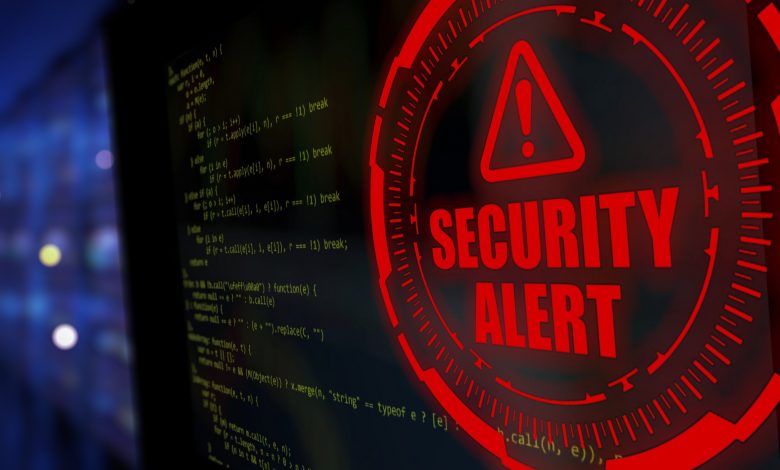10 Cyber Security Solutions Every Business Needs

When it comes to keeping your business safe, cybersecurity solutions are essential. In 2020, 3 out of 4 companies were the victims of phishing scams. The right combination of tools and protocols can help protect your network from malicious attackers, while also ensuring compliance with industry regulations.
With that said, here are 10 cybersecurity solutions every business should consider.
-
Table of Contents
Firewall
A firewall is the first line of defense against malicious actors on the internet. By utilizing a firewall, you can monitor and control incoming and outgoing traffic. You can also identify potential vulnerabilities that could be exploited by attackers.
Without a firewall, you’re leaving your business exposed to cyber threats such as malware, ransomware, and viruses.
-
Antivirus
Antivirus software is designed to detect, prevent, and eliminate malicious software, including viruses and spyware. By scanning your system regularly, it can identify and quarantine suspicious files, helping to protect against any potential damage that could be caused by a virus.
-
Intrusion Detection System (IDS)
An Intrusion Detection System (IDS) is a network security tool that monitors for malicious activity on your network. It can detect suspicious traffic or behavior, alerting you to any potential threats that could harm your data.
-
Two-Factor Authentication (2FA)
Two-factor authentication adds an extra layer of security to your accounts. With 2FA, a user must provide two pieces of information. It’s usually something they know (like a password) and something they have (like a smartphone) in order to access an account. This helps ensure that only authorized users can access sensitive data.
-
Data Encryption
Data encryption is the process of encoding information or data so that it can only be accessed by those with the correct key or password. Encrypting data helps protect it from unauthorized access and is an essential tool for businesses that must comply with regulations like PCI DSS or HIPAA.
-
Password Policies
Password policies are a set of rules that define how users should create and manage their passwords. They help ensure that users have strong, secure passwords and that they are changed regularly. This helps protect against brute-force attacks or other methods of guessing a user’s password.
-
Penetration Testing
Penetration testing is a method of assessing the security of a network by simulating an attack from an outside source. It can help identify vulnerabilities in your system and allows you to take steps to fix them before a real attack takes place.
-
Backup and Disaster Recovery
Having a backup plan in place is essential for any business. If a cyberattack happens, you need to be able to restore your data quickly. Having a backup also helps prevent data loss in case of hardware failure or other disasters.
-
Network Access Control (NAC)
Network Access Control (NAC) is a method of controlling access to your network. It allows you to set up rules for what users can and can’t do, as well as control what devices can access the network. This helps protect against malicious actors and unauthorized access to sensitive data.
-
Endpoint Detection and Response (EDR)
Endpoint Detection and Response (EDR) is a security solution that monitors for suspicious activity on devices connected to the network. It can detect unusual behavior, alerting you, so you can take action to stop any potential threats before they do damage.
-
Hire Cybersecurity Services
Hiring a technology services company to provide cybersecurity services for your business is an excellent way to ensure that you have the most up-to-date security solutions in place. A third-party provider can monitor your network 24/7, providing real-time security alerts and responding quickly to any threats.
In addition, cybersecurity services will have the expertise to help you develop and implement the best security practices for your business.
How Can Businesses Bounce Back After a Cyberattack?
No matter how secure your business is, cyberattacks can still occur. So what should you do if your business is the victim of a cyberattack? Well, start by taking action immediately to contain the damage and protect your data.
Next, contact your IT department or a technology services company to help investigate the attack and identify the cause. After that, you can work on restoring any damaged data and rebuilding your systems. It’s also important to review your security policies to make sure they are up-to-date and effective.
Finally, consider investing in cybersecurity insurance to protect your business from any future attacks. Cybersecurity insurance can help cover the costs of responding to a breach and restoring any lost data.
Keep in mind that if any client information was stolen, make sure to notify them and provide any assistance they may need. Taking this step ensures that your customers remain loyal and that your reputation is not negatively impacted.
It’ll also prevent any legal or financial repercussions. Without proper communication, a customer could sue you for not protecting their data or failing to notify them of a breach in a timely manner.
Protect Your Business With Cybersecurity Solutions
By implementing the right security solutions, businesses can protect their networks and data from malicious actors, while also ensuring compliance with regulations. The above solutions are essential for any business that wants to stay ahead of the ever-evolving threat landscape and protect its data from cyber threats.
For more comprehensive cybersecurity solutions, it is important to consult with a qualified IT professional who can help you design a tailored security approach for your business. This way, you can ensure that your network and data are protected from any potential threats.
If this content was helpful, be sure to check out more of our articles. Have an amazing day!





